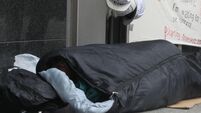One of the last Holocaust survivors saved by Mary Elmes has died
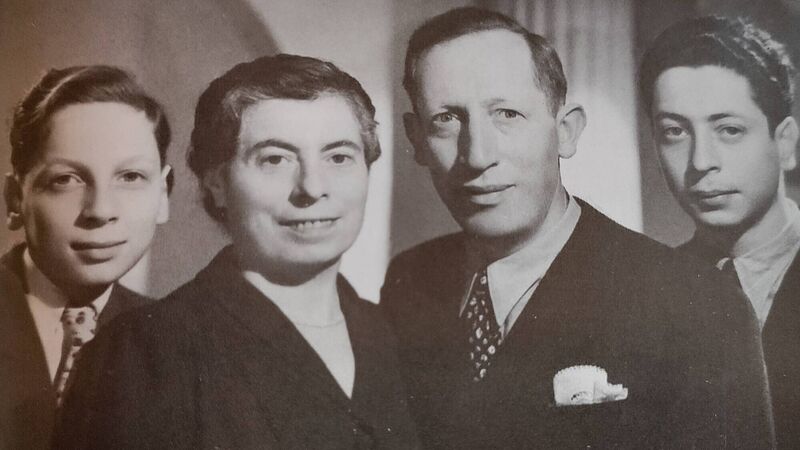
Georges Koltein (left) with his parents and older brother Jacques. The Koltein family survived the war but several of their relatives did not. Photo courtesy of Georges Koltein's family.
Georges Koltein’s light has gone out. That is an approximate translation of the moving text that came from his wife Renée Scemama to pass on news that one of the last Holocaust survivors saved by Irish volunteer Mary Elmes had died.
He was in his 88th year, it was noted at his funeral in Paris yesterday. His age alone tells a story of victory against fascism because, at many times during his life, Georges Koltein thought that he might not have made it to double figures.
“Of the 13,000 people who were rounded up in Paris [on 16 July 1942], there were 4,000 children, none of whom came back after being deported. I have always thought that I might have been one of them,” he said in 2017.
Known as the Vélodrome d'Hiver round-up, that mass arrest led to the largest French deportation of Jews during the Second World War. Georges Koltein and his family were not part of it simply because they decided not to answer the front door when French police banged on it in the early hours of July 16, 1942. The police did not persist.
The family later fled Paris and travelled south into the unoccupied free zone of France. Georges and his brother Jacques were taken to Rivesaltes holding camp outside Perpignan where Mary Elmes, as head of the Quaker delegation in the region, did much of her work.
HISTORY HUB
If you are interested in this article then no doubt you will enjoy exploring the various history collections and content in our history hub. Check it out HERE and happy reading
The Koltein brothers arrived at a critical time as it coincided with the departure of the first convoy of Jewish people. In August 1942, some 400 people were loaded on to cattle wagons and taken to Drancy in Paris and, later, to their deaths in the extermination camp at Auschwitz.

Lindsley Noble, the Quaker director in France, described how Mary Elmes, with help from the commander of the camp David-Gustave Humbert, rescued as many as 34 children from that convoy.
Earlier, when she first heard deportation was imminent, she bundled several children into the boot of her car and transported them to the relative safety of a series of children’s homes along the coast.
In the autumn of 1942, Mary Elmes and her colleagues saved an estimated 427 children from deportation. Despite their efforts, thousands still went to their deaths. Between August and October 1942, over 2,000 Jewish adults and 174 children, some as young as two, were deported from Rivesaltes in southwest France.
During that dark time, Mary Elmes, with help from a French charity, arranged for Georges and Jacques Koltein to be taken to the children’s home La Villa Saint-Christophe on the coast. Their mother, Chuma Figa Koltein, later joined them.
In 2014, Mary Elmes was named Righteous Among the Nations, Israel’s highest honour. Professor Ronald Friend, who was also saved by Mary Elmes, travelled from the US to attend a ceremony in Perpignan held in her honour.
Yesterday, he recalled meeting Georges there. “He was talking to a group of French children listening intently about his experiences and escape from Rivesaltes,” he said.
By 2014, Georges Koltein had decided to talk openly about the past. “Twenty years ago, I wouldn’t have spoken about it. Now, I am one of the last witnesses. It is the time to speak of those things.”
In 2019, he and Charlotte Berger-Greneche, who was also saved by Mary Elmes, travelled to her native Cork city to attend the opening of a bridge named after her. They also visited Mary Elmes’s former school and told the assembled audience at Ashton School Prize Day that it was important never to forget what happened in Europe during the Second World War.
“If we don’t talk, people can say it [the Holocaust] didn’t happen,” Georges Koltein said.
Georges Koltein is survived by his wife Renée Scemama and his children, Ariel, Éric and Agnès.




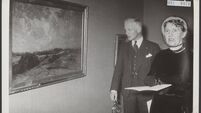
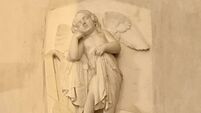
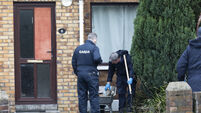



![Johnny_Stephens_Photography-02-425A6831-Edit[1].jpg Restaurant review: The Ivy Asia is an assault on all five senses — I hated it](/cms_media/module_img/9752/4876311_6_teasersmall_Johnny_Stephens_Photography-02-425A6831-Edit_5b1_5d.jpg)

